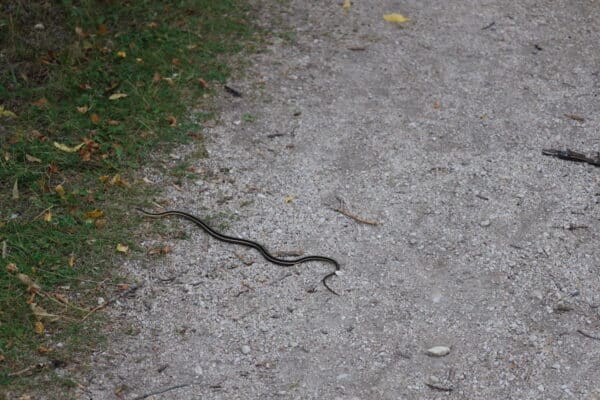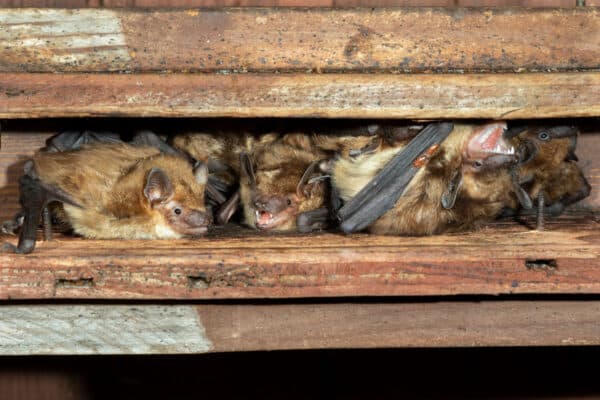
Encountering injured wildlife on your property can be a distressing experience. Whether it’s a bird with a broken wing, a deer struck by a car, or a small mammal in distress, knowing how to respond can make a significant difference in the animal’s chances of recovery.
At Covenant Wildlife, we understand the importance of humane and effective solutions for dealing with injured wildlife. This guide will provide you with essential steps to take if you find injured wildlife on your property.
1. Assess the Situation Safely
The first step when you encounter injured wildlife is to assess the situation from a safe distance. It’s crucial to prioritize your safety and the safety of the animal. Wild animals, even when injured, can be unpredictable and potentially dangerous.
- Keep Your Distance: Observe the animal from a safe distance to avoid causing additional stress or provoking a defensive reaction.
- Evaluate the Surroundings: Take note of the location and any immediate dangers, such as traffic, predators, or harsh weather conditions.
- Avoid Direct Contact: Do not attempt to touch or handle the animal with bare hands. Injured animals may bite, scratch, or carry diseases.

2. Determine If the Animal Needs Help
Note that not all wildlife sightings require intervention. Some animals may appear distressed but are actually exhibiting normal behavior, such as fledgling birds learning to fly or young animals temporarily left alone by their parents.
- Fledgling Birds: It’s common for young birds to spend time on the ground while learning to fly. Observe from a distance to see if the parents return.
- Young Mammals: Many young mammals are left alone for extended periods while their parents forage. Unless the animal is visibly injured or in immediate danger, it’s best to leave it undisturbed.
- Resting Wildlife: Some animals may appear lethargic or injured but are simply resting. Observe for a while to determine if intervention is necessary.
If you’re unsure whether the animal needs help, contact a local wildlife rehabilitation center or your state’s wildlife agency for advice.
3. Contact a Wildlife Professional
If you determine that the animal is injured and needs assistance, then contact a wildlife professional. This is because wildlife rehabilitators are trained to handle and care for injured animals.
- Find a Rehabilitator: Locate a nearby wildlife rehabilitation center or licensed wildlife rehabilitator. Many states have directories or hotlines for wildlife emergencies.
- Describe the Situation: Provide detailed information about the animal’s condition, location, and any immediate threats.
- Follow Instructions: Follow the rehabilitator’s instructions carefully. They may advise you to monitor the animal until help arrives or provide guidance on how to safely contain the animal.
4. Provide Temporary Care (If Advised)
If instructed by a wildlife professional, you may need to provide temporary care for the injured animal until help arrives. Here’s how to do it safely:
- Containment: Use a box or a pet carrier lined with a soft cloth to contain the animal. Ensure it has proper ventilation.
- Minimize Stress: Keep the container in a quiet, dark, and warm place to minimize stress.
- Avoid Feeding: Do not attempt to feed or give water to the animal unless specifically instructed by a professional. Improper feeding can cause more harm than good.
5. Transporting Injured Wildlife
If directed to transport the animal to a rehabilitation center or veterinary clinic, then you should follow these guidelines to ensure a safe journey:
- Secure the Container: Ensure the container is securely closed and stable during transport.
- Avoid Loud Noises: Keep noise to a minimum to reduce stress for the animal.
- Drive Carefully: Drive smoothly and avoid sudden stops or sharp turns.
6. Understand Legal Considerations
Further, handling wildlife is subject to various state and federal regulations. It’s important to be aware of the legal considerations when dealing with injured wildlife:
- Permits: In many states, handling wildlife requires a permit. Only licensed rehabilitators and professionals are authorized to care for injured wildlife.
- Protected Species: Some species are protected by law, and unauthorized handling can result in legal penalties. Always contact a professional for guidance.
- Rehabilitation and Release: Only licensed rehabilitators are qualified to care for and release wildlife back into the wild.
7. Prevent Future Injuries
If you take the right steps to prevent future wildlife injuries on your property, then you can reduce the likelihood of running into injured animals:
- Wildlife-Friendly Practices: Implement wildlife-friendly practices such as securing trash, removing attractants, and using humane deterrents.
- Safe Landscaping: Modify your landscaping to minimize hazards. Avoid using pesticides and other chemicals that can harm wildlife.
- Vehicle Caution: Drive cautiously, especially in areas known for wildlife crossings. Use wildlife crossing signs to alert drivers.
8. Educate Yourself and Others
Educating yourself and your community about wildlife safety and rehabilitation can promote better outcomes for injured animals:
- Workshops and Seminars: Attend workshops or seminars on wildlife rehabilitation and safety.
- Community Outreach: Share information with your neighbors about what to do if they encounter injured wildlife.
- Support Local Wildlife Centers: Volunteer or donate to local wildlife rehabilitation centers to support their efforts in caring for injured animals.

9. Common Injuries and Their Causes
Understanding common injuries and their causes can help you recognize when wildlife needs assistance:
- Vehicle Collisions: Many wildlife injuries result from vehicle collisions. Commonly affected animals include deer, raccoons, and birds.
- Window Strikes: Birds often collide with windows, resulting in concussions or broken wings.
- Predator Attacks: Domestic pets and wild predators can injure smaller wildlife. Bite wounds are a common injury.
- Traps and Snares: Animals can get caught in traps or snares, leading to serious injuries or entanglement.
10. Recognizing Signs of Injury
Being able to recognize signs of injury can help you determine when an animal needs assistance:
- Visible Wounds: Look for open wounds, bleeding, or obvious signs of trauma.
- Difficulty Moving: Limping, difficulty flying, or inability to move properly are clear indicators of injury.
- Unusual Behavior: Erratic behavior, lethargy, or lack of responsiveness can signal distress or injury.
Be Safe if You Have Injured Wildlife on Your Property
When you run into injured wildlife on your property, it requires a thoughtful and informed approach to stay safe. If you assess the situation safely, determine if the animal needs help, and contact a wildlife professional, then you can ensure that the animal receives the care it needs. Providing temporary care, understanding legal considerations, and preventing future injuries are all essential steps in protecting wildlife.
At Covenant Wildlife, we are committed to humane and effective wildlife management. Our team of experts is here to assist you in handling wildlife emergencies and ensuring the well-being of both the animals and your property. If you find injured wildlife on your property, don’t hesitate to reach out to us for professional guidance and support. Together, we can make a difference in the lives of our local wildlife.




